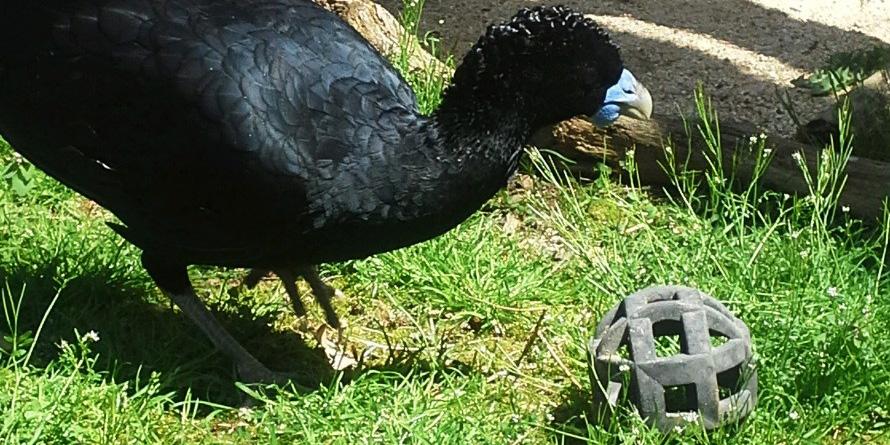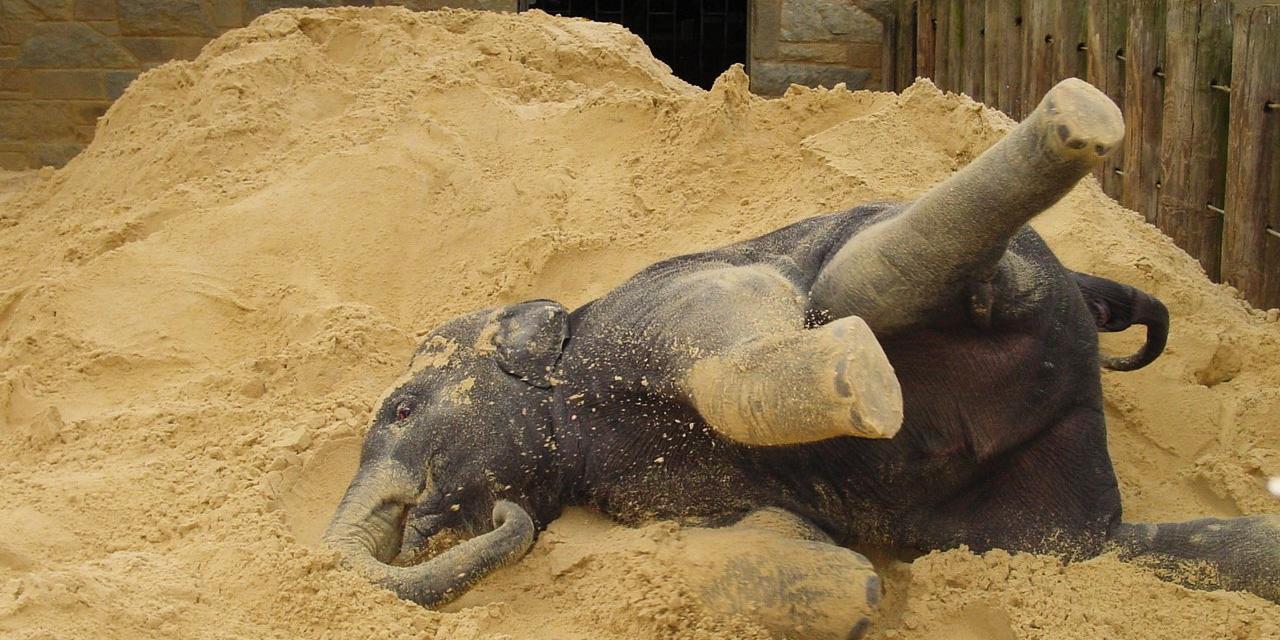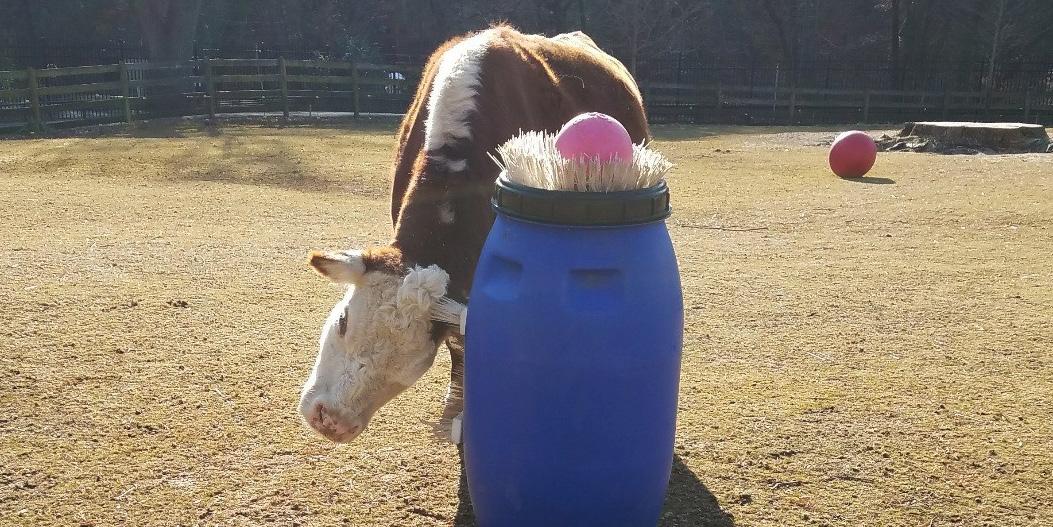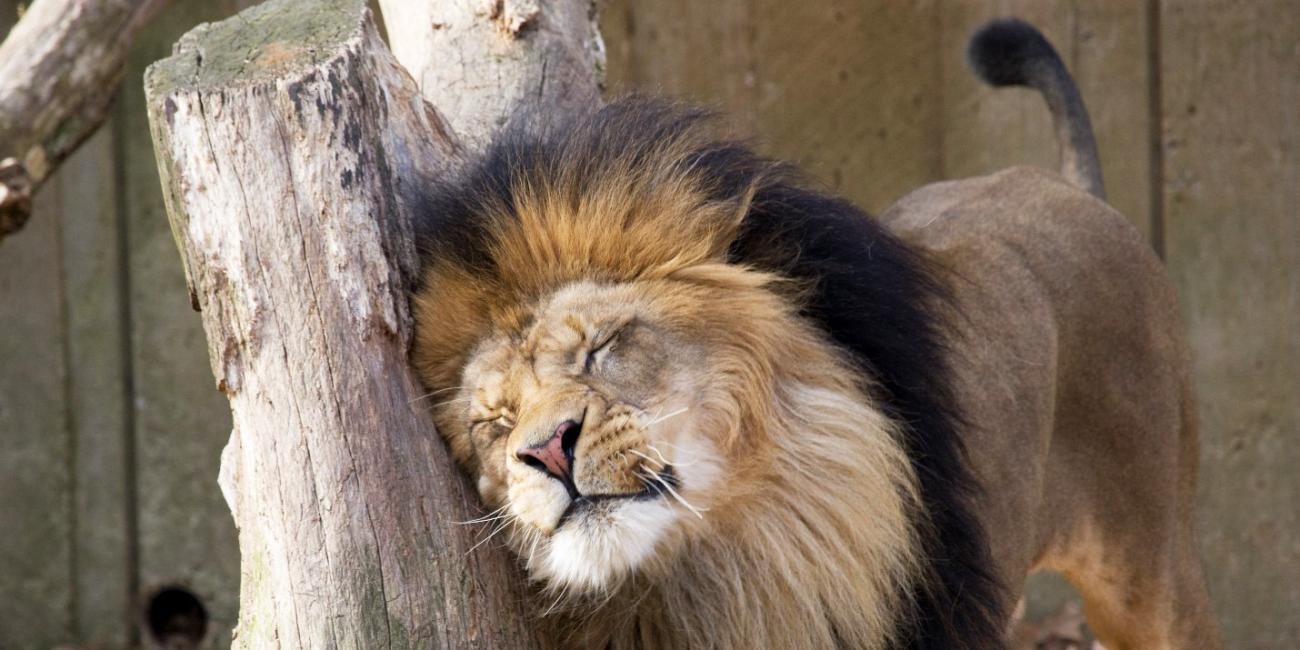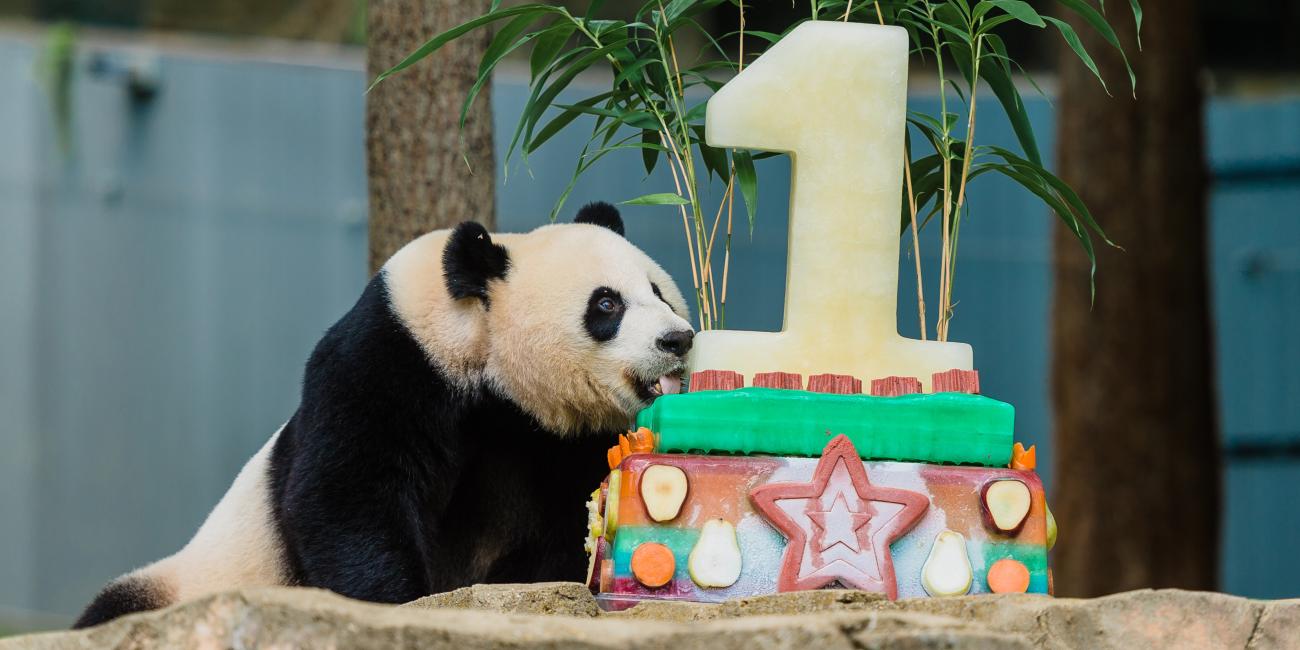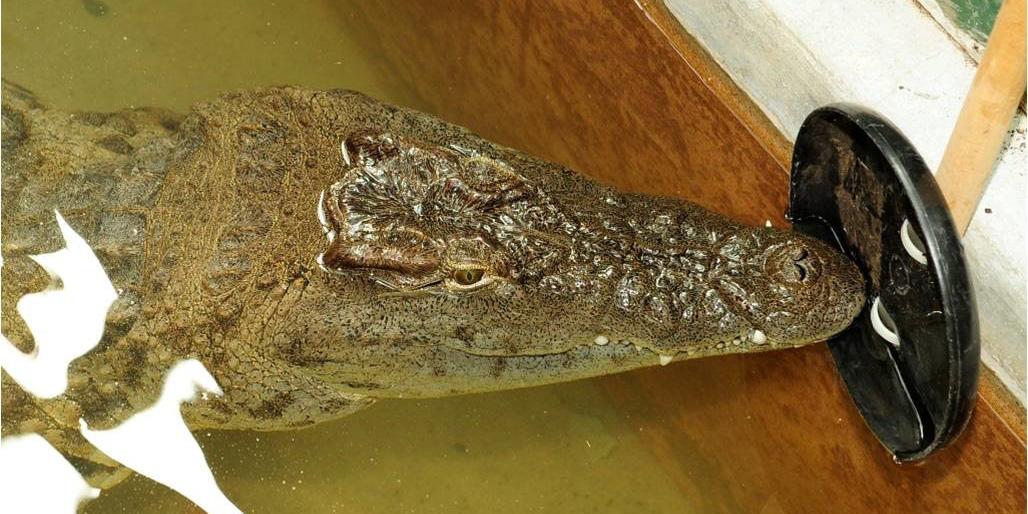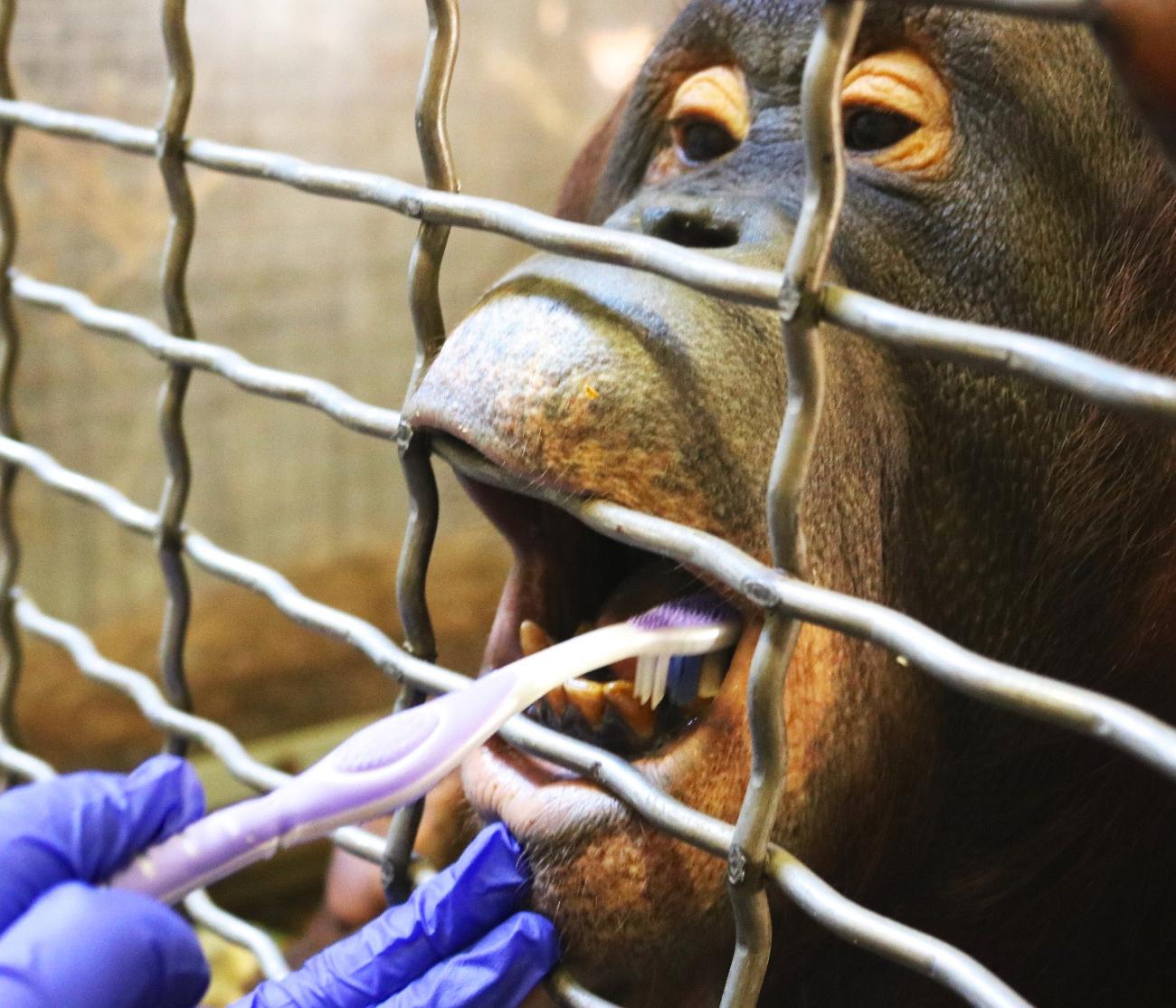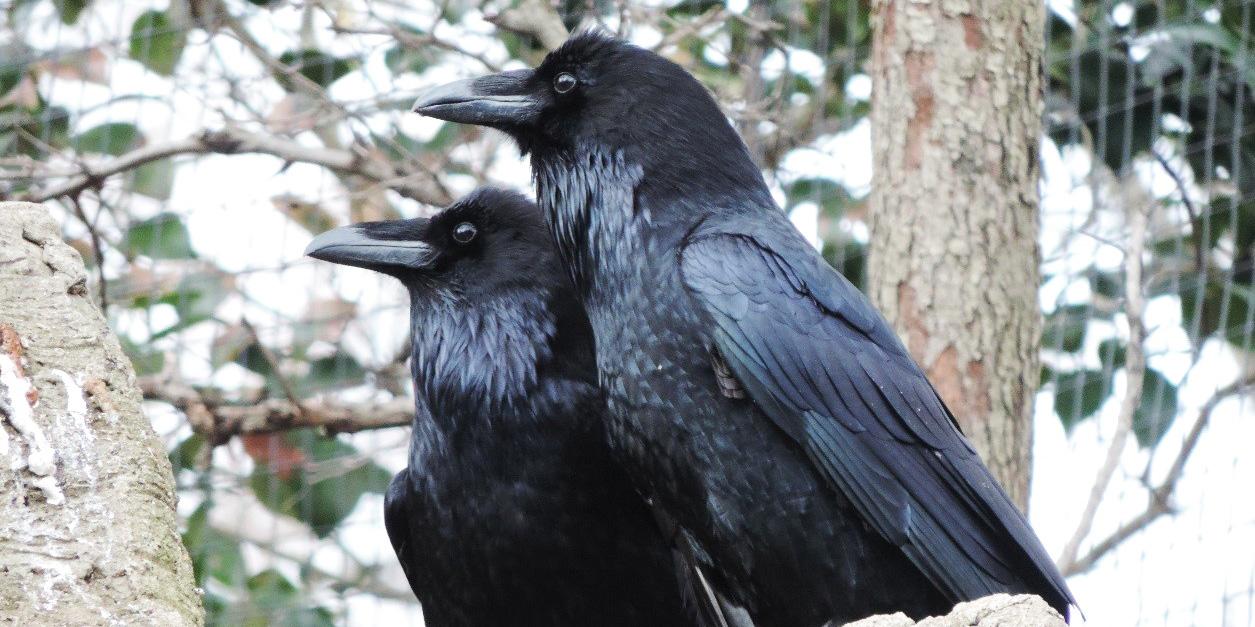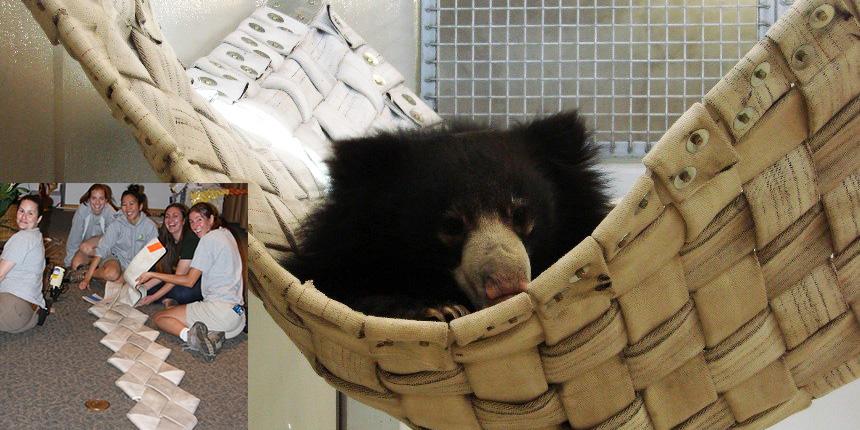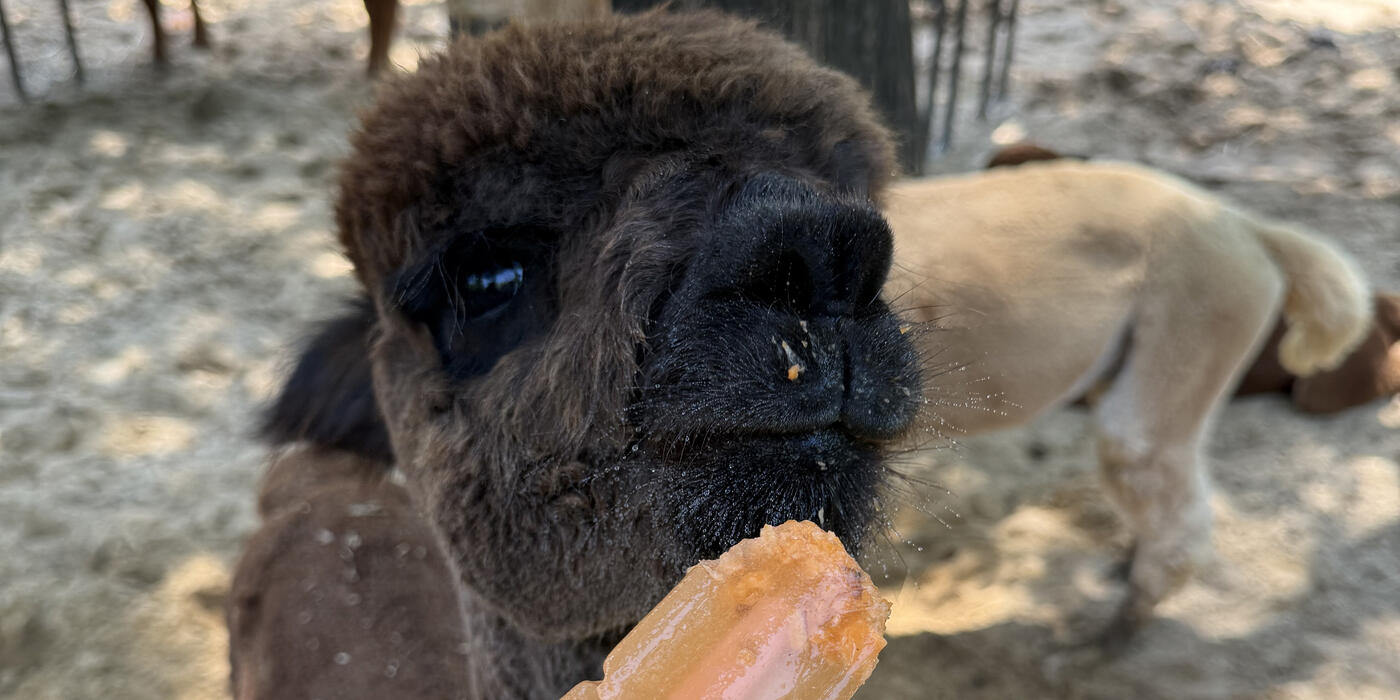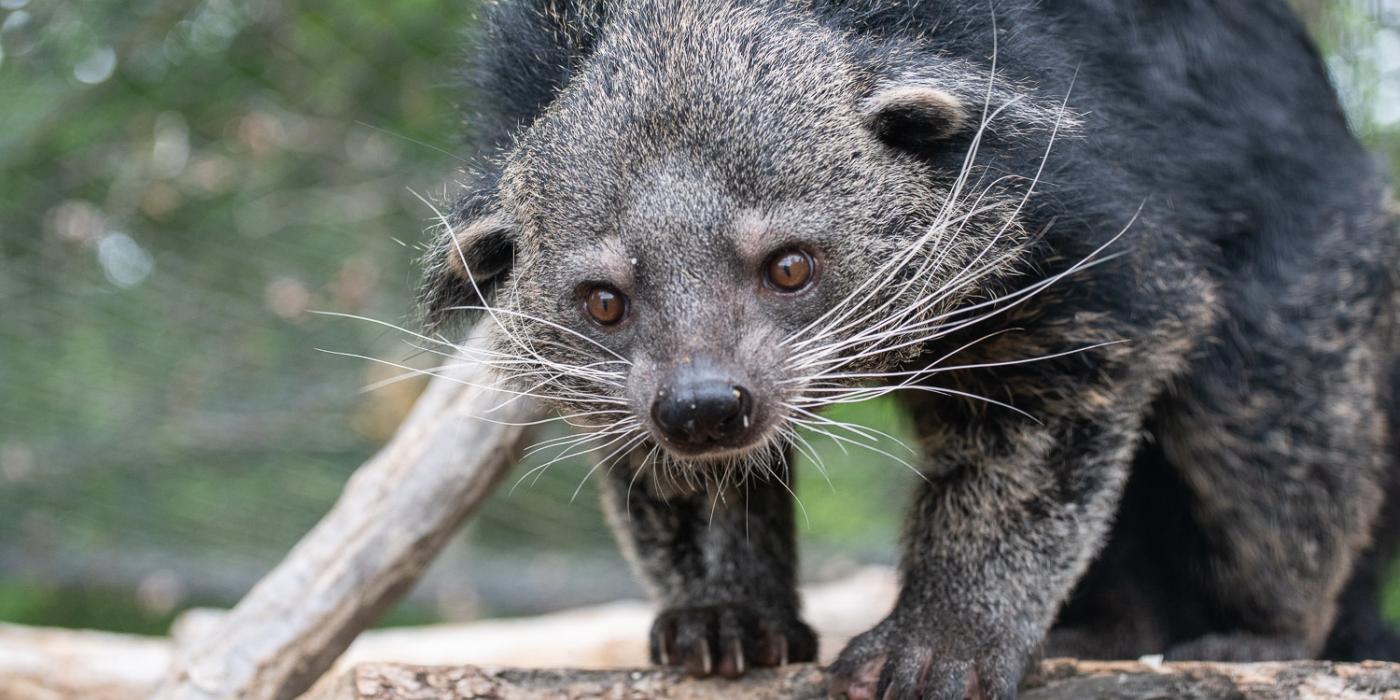What’s in the Zoo’s Toy Box?

Elephants playfully roll in sand dunes. Sloth bears lounge in hammocks, woven by keepers. Giant pandas gobble up birthday cakes garnished with their favorite foods. Enriching toys, environments, foods and experiences abound at the Smithsonian’s National Zoo as part of the Animal Enrichment and Training Program. Learn how animal care staff encourage the Zoo’s residents to use their natural behaviors from keeper Hilary Colton.
More than 1,800 animals representing 300 species live at the Smithsonian’s National Zoo and Conservation Biology Institute. We formed the Enrichment and Training Committee to help keepers at both facilities acquire species-appropriate enrichment items and training tools that meet our animals’ needs. This group of Animal Care Sciences professionals also specializes in training techniques that reduce stress during health and husbandry procedures.
To determine the most effective enrichment for each species, we study their natural history and biology. While we cannot recreate the exact conditions that animals experience in their native habitats, we can provide them with toys, activities and exhibits that encourage them to use their natural behaviors and allow them to exercise choice and control over how they spend their time. Giving the animals a wide variety of enrichment helps keep their day interesting and enhances their quality of life.
Enrichment can be social, cognitive, environmental, sensory or food-related. Ideally, enrichment items or activities will fall under more than one of those categories. For example, keepers presented the blue-billed curassow pictured above with a feeder ball. They hide grapes (food) inside, and the bird must manipulate the ball to roll them out (cognitive).
Encouraging animals’ natural behaviors can sometimes be as simple as adding elements found in nature to their Zoo habitats. Asian elephants cover themselves in dirt and sand to protect their skin from the sun. When we added large piles of sand in the yards and Elephant Community Center, it offered them a new form of tactile enrichment. The girls had a blast rolling around!
Tactile enrichment appears to be a favorite of Rose, our Hereford cow. Kids’ Farm keepers mounted car wash brushes to barrels, giving her the opportunity to chin-scratch as she pleases.
What’s that smell? Spices, extracts, fur and other scents—from the aromatic to the pungent—are scattered around animal habitats, encouraging them to sniff and explore. Many mammals spend a lot of time scent marking in areas where keepers deposit the olfactory stimuli, keeping them entertained for extended periods. In this photo, African lion Luke investigates a log that Great Cats staff sprinkled with pumpkin spice.
The animals’ favorite enrichment items often involve food. Animal care staff work closely with Zoo veterinarians and nutritionists to ensure that food is both safe for the animals and portioned properly. For special events, like a giant panda birthday party, our Commissary keepers create cakes that are nutritious and look like works of art. In this photo, Mei Xiang digs in to Bei Bei’s first birthday fruitsicle cake that is made of dilute juice and covered in honey, leaf-eater biscuits, apples, pears and sweet potatoes.
Training animals to do husbandry behaviors on cue is another way keepers care for animals. At the Zoo, we use operant conditioning and positive reinforcement training, which means that animals have the choice to participate in training sessions or to walk away.
Reptile Discovery Center keepers have trained this crocodile to move to a desired location and touch her nose to a target at the end of a pole. When she does the behavior asked of her, keepers reward her with food. They do this training several times a week; the animal knows that she will receive a reward for approaching the target. This allows keepers to safely observe the animal and look for any cuts, scrapes or other signs that she may need a visit from the Zoo’s veterinarians.
Training husbandry behaviors also allows keepers to provide safe, effective and stress-free medical care whenever possible. Bornean orangutan Batang voluntarily participates in having her teeth brushed. This allows primate keepers to quickly detect any dental issues that arise.
Sometimes, keepers can run into a roadblock when trying to train or enrich certain animals. In these cases, the Enrichment and training Committee calls a brainstorming group together to think through possible solutions.
Meet Kanga and Dekali—two female ravens who were injured in the wild. To Bird House keepers' surprise, the ravens could maneuver around the exhibit and fly. This ability, coupled with the birds' wariness of people, made training the birds to climb upon a scale challenging. Interaction with keepers is an integral part of the birds' care. Knowing this, Bird House staff turned to the Enrichment and Training Committee for help. The group’s advice helped keepers train the birds not only for weight, but also for annual exams and vaccinations!
Creating enrichment can be a big job! Fire hose is very durable and can be woven into different designs, including as hammocks, balls, feeders and platforms. The Enrichment and Training Committee hosts workshops in which many keepers get together and construct large-scale items that animals at the Zoo and Smithsonian Conservation Biology Institute can play with and enjoy. In this photo, sloth bear Remi rests in a hammock crafted by keepers.
This story appears in the January 2018 issue of National Zoo News. Give a toy to your favorite animal by donating to the Zoo Toy Box! Keepers replenish toys on a regular basis to keep habitats novel and stimulating. Click here to support the Animal Enrichment Program.